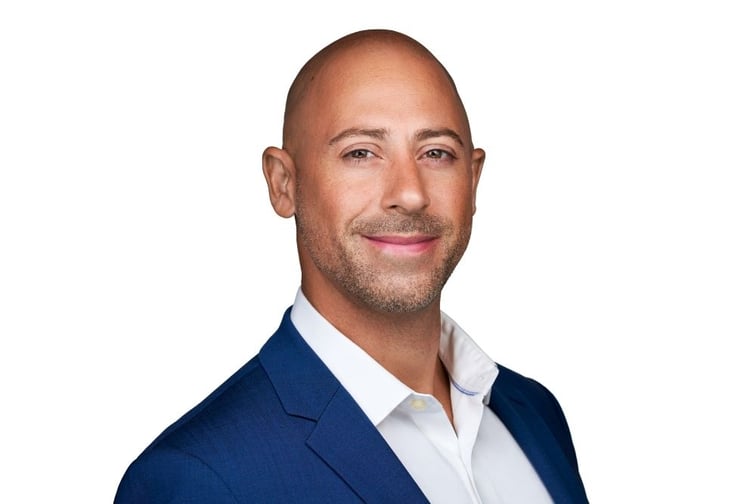

Certificial’s technology turns a certificate of insurance, or COI, into a living, breathing document. For the insurance industry, that’s a relatively new thing.
A COI provides a summary of insurance coverage for a particular business as part of the commercial insurance process. It can easily become outdated, however, without frequent checking and scrutiny. That’s the process “pain point” that the insurtech start-up is set up to address. Certificial’s platform, particularly its Smart COI Network technology and data, keeps a COI current due to real-time updates. That way, users always know if and when a business isn’t properly insured.
CEO and co-founder Peter Teresi (pictured) said that the technology, which uses real-time data to ensure businesses have continuous, compliant coverage, reflects a significant improvement over the status quo.
“When you’re trying to monitor insurance coverage year after year … it’s very difficult to achieve any level of compliance with a static document because technically, a [COI] is one day of evidence, not one year of evidence,” Teresi said. “It’s literally a document that expires within 24 hours, so your ability to use that document to ensure that insurance remains intact is nearly impossible.”
Using its Smart COI technology would make all the difference, Teresi said.
“It allows for a data-first experience and the certificate of insurance being a representation of that data as a principal format at any moment,” he said. “If data changes in any point in time, it’s also reflected on the certificate of insurance, making a smart meeting occurrence.”
The idea has gained traction elsewhere, with start-ups including Bunker, whose Live COI is designed to also actively reflect changes to an active insurance policy.
New Jersey-based Certificial launched initially in early 2021 and debuted its initial product in 2020. It’s raised about $5.8 million of venture capital to date, with 18 employees so far and a number of different contractors. Plans call for adding at least 10 more employees before the end of the year.
Teresi describes the company as both a platform and software – more precisely a “Smart COI Network.”
“The reason we describe our technology and our platform as a network is because we’re a very partner-driven organization and we do have partners on both sides of our application that really both begin and end the journey of insurance verification,” Teresi said.
The system interacts with three different parties, including an agent or broker, or insurance producers; a policyholder - someone or an entity that has the policies in question, and the hiring person – the person or requesting party that is bringing on the person or entity to do the work. The goal, Teresi said, is to know that the person or entity is insured – known as a certificate holder.
It’s a straightforward process.
“Let’s say you’re a technologist and you’re going to come into my datacenter to perform some type of work. I need to know that you’re insured because if you take down my systems and my network goes down and all of my customers don’t have service, then your insurance needs to protect that,” he said. “In order for me to know that you’re properly insured to protect the work, we engage with your agent or broker. We need to service a certificate of insurance and our network so I can monitor and see that you have the proper level of insurance that I require in order to protect my business.”
An improvement to that process is necessary, he said, because making sure coverage is current is hard to track. Certificial’s API integrations work with its technology to make sure everything is current, quickly identifying when adjustments are needed with current data, rather than an old COI that is months out of date.
“This is why there are so many unpaid claims in the insurance industry because at the point in which the COI was received, everything was in good order,” Teresi said. “By the time the claim happened … maybe the insurance was no longer intact or maybe there was another claim against it, so the coverage is no longer available. There’s a lot that can go wrong between those two points, and we’re eliminating a lot of that.”
The key piece of technology, Teresi said, is API connectivity, that allows data from the source to be shared to the destination.
AI is something that could enhance the system further down the line.
“At the highest level of what you’re looking at, if you have insurance policy coverage, there’s no need for [AI],” Teresi said. “When you get one layer deeper and you start looking at endorsement documents – we are developing some technology and AI to get into these kinds of documents, but not right now.”
The company’s system is mostly integrated with agents or brokers, via their Agency Management Systems, as well as Carrier Policy Administration Systems.
“We work with agents and brokers. They share with us that in their commercial lines of business that they have challenges with certificates of insurance. We show them our platform, and if they believe it will bring them a lot of value, we determine if we’re already integrated with the system they’re using,” Teresi said. “If we are, then great. They’re a click away and they can start taking advantage of our software.”
If a potential client’s agency management software system isn’t already integrated with Certificial, then they make an introduction to their sales contact and talk about what an integration looks like and start moving down that path, Teresi said.
“Hopefully, the agency management systems are open to it, and so far most are, as they know that a customer is being serviced properly in the end,” Teresi explained.
If developers are ready and all parties want to go forward, Teresi said, an integration can be completed in three months or less.
